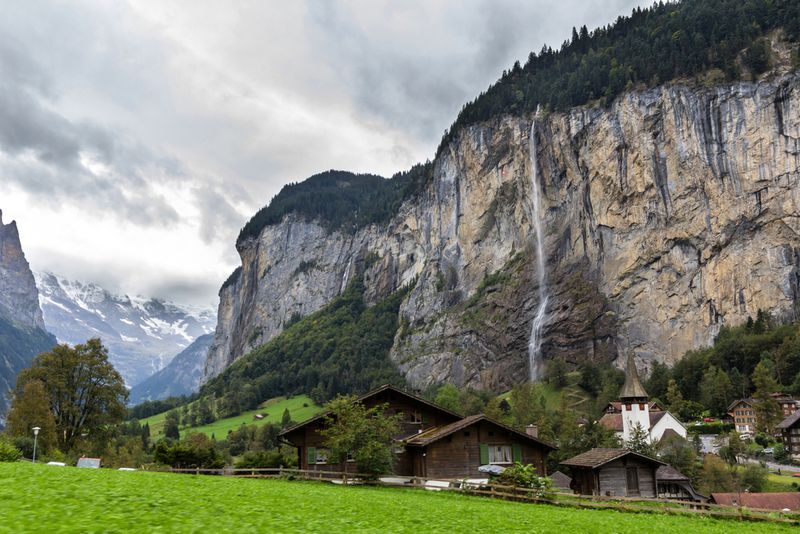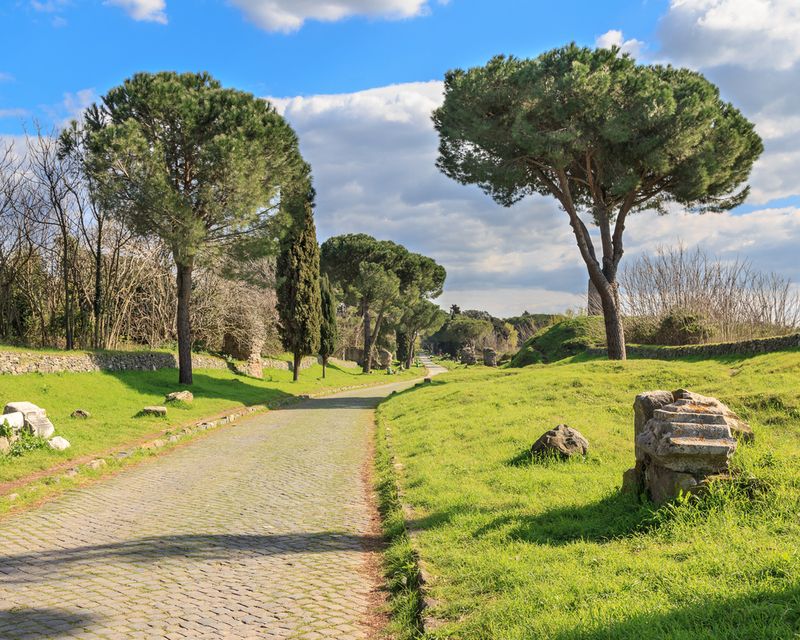
The world we live in is gorgeous and often awe-inspiring. Given that fact, it’s little wonder that many artists throughout the years, in many different places and cultures, have tried to capture just a little bit of that beauty on their canvases. From the natural to the man-made, there is no shortage of vantage points that have inspired—and continued to inspire—us to create memorable works of art. Here are 9 masterpieces that are almost as breathtaking as the real thing.
Advertisement
9. San Giorgio Maggiore (Monet)
San Giorgio Maggiore is one of Venice’s islands, so it should come as little surprise that it’s been the subject of a painting or two. Venice is regularly cited as one of the most beautiful cities in the world, thanks to a combination of architecture and natural endowments. The island’s most recognizable feature is the Church of San Giorgio Maggiore, a 16th-century church. The building’s silhouette certainly dominates Claude Monet’s San Giorgio Maggiore by Twilight, an Impressionist work completed between 1908 and 1912. The painting was started during Monet’s only trip to Venice. Even more than a century later, you can visit Venice and experience this precise view for yourself, with the sun setting over the water and the buildings of San Giorgio Maggiore silhouetted against the darkening sky.

8. Lander’s Peak (Bierstadt)
Albert Bierstadt was born in Dusseldorf, Germany, but immigrated to the United States at an early age. Soon determining to become a painter, Bierstadt returned to Europe to study art. In 1859, he joined an expedition led by Frederick W. Lander, a land surveyor. They traveled west from Fort Laramie, Wyoming, to the Pacific Ocean. Along the way, Bierstadt sketched and painted many majestic scenes of the American west. His 1863 piece The Rocky Mountains, Lander’s Peak is based on one of the sketches he made during this expedition. The painting depicts Lander Peak, a summit of more than 3,000 meters (10,000 feet) located in the Wyoming Range; the peak is one of the highest in the area. Although Bierstadt’s painting isn’t true to nature, Rocky Mountain landscapes like Lander’s Peak are breathtakingly beautiful and popular with photographers and tourists alike.

7. Lake McArthur (MacDonald)
J.E.H. MacDonald was part of the Group of Seven, a famed group of Canadian artists working in the early part of the 20th century. The Group of Seven tended to have a nationalistic bent and painted many iconic scenes of the Canadian wilderness; at least 2 members were also war artists capturing Canadian soldiers during the First World War. Beginning in 1924, MacDonald traveled west annually and produced many works featuring the Rocky Mountains, which dominated his later works. Lake McArthur, Yoho Park was painted in 1924, the year of MacDonald’s inaugural trek west. Yoho National Park was the second national park in Canada and forms part of the Canadian Rocky Mountain Parks World Heritage Site with several other parks. The Lake McArthur Trail, an 8-kilometer circuit, will take you to the north shore of the lake—which looks much the same today as it did in 1924.

6. Cotopaxi (Church)
Frederic Edwin Church, like Albert Bierstadt, was a member of the Hudson River School of landscape painting in the 19th century. Like Bierstadt, Church painted grandiose landscapes. Whereas Bierstadt painted the American West, Church was lured in by South America; many of his works feature Andean landscapes, inspired by 2 trips to Quito, Ecuador. While his most famous work is The Heart of the Andes, his 1855 painting Cotopaxi is perhaps a truer depiction of a South American landscape. The work shows the volcano Cotopaxi, one of the world’s highest volcanoes and the second-highest summit in Ecuador. As of 2015, Church’s 1862 painting depicting Cotopaxi smoldering away might be more accurate—the volcano, one of the most active in Ecuador with 87 recorded eruptions since 1534, has entered a new phase of activity and is under constant monitoring since an eruption of ash on August 14 and 15, 2015.

Advertisement
5. Autumn Mountain Shadow (Guan Tong)
Guan Tong lived more than 1,000 years ago, during China’s Five Dynasties and Ten Kingdoms period. A painter of the Northern Landscape style, he lived in Chang’an (Xi’an) and was no doubt inspired by the mountainous terrain that surrounded him. Autumn Mountain Shadow is perhaps the most famous painting attributed to Guan Tong and while it’s difficult to discern the precise place that he was painting, there are hundreds of similar views of the rugged northern mountains in and around Xi’an. A barely visible path in the painting is reminiscent of many of the winding trails near Xi’an, especially those about 75 miles (120 kilometers) east of the city, near Mount Hua. Mount Hua itself is similar to the landscape Guan Tong depicts in Autumn Mountain Shadow, and many tourists today visit Mount Hua for its ancient, sacred sites and temples, as well as its breathtaking views.

4. Staubbach Falls (Bierstadt)
Albert Bierstadt painted much of the American West, but he also painted plenty of European landscapes as well; one of his first exhibits featured a large canvas of a Swiss landscape. Bierstadt studied in Europe and later traveled widely there, making many sketches and paintings in his signature grandiose style. Among his Swiss landscapes is this 1865 piece, entitled Staubbach Falls, Near Lauterbrunnen. The waterfall is one of Europe’s highest unbroken falls, descending about 1,000 feet into the valley below. Located in the Bernese Oberland, the Falls are a popular site in Switzerland, along with the iconic peaks of Eiger, Monch and Jungfrau in the east. The Falls are about 1 kilometer from the village of Lauterbrunnen, which lies at the bottom of one of the deepest valleys in the Alps.

3. Grand Canal, Venice (Canaletto)
Giovanni Antonio Canal, better known as Canaletto, was born in Venice in 1697. He spent most of his life there and took up his father’s line of work: painting. Much of his early artwork was painted “from nature,” rather than in the studio, a technique he returned to in his later years. In his later works, he painted grand scenes of Venice’s iconic canals, including the Doge’s Palace. His 1738 painting The Grand Canal in Venice from Palazzo Flangini to Campo San Marcuola depicts the Grand Canal as it was—and, perhaps surprisingly, this is a scene that remains remarkably similar even today. The buildings still bear a likeness to those depicted in Canaletto’s work, a testament to Venice’s enduring local flavor. And, of course, gondoliers are still a common sight on the waterways of this iconic city.

2. Futamigaura at Dawn (Kunisada)
During the 19th century, Utagawa Kunisada was one of the most prolific masters of ukiyo-e woodblock prints. His works were incredibly popular, although they have been overshadowed since by artists such as Hokusai and Hiroshige. Today, Kunisada’s work is becoming more recognized. Although he was more known for prints of popular actors and pretty girls, he also produced landscapes and seascapes like Futamigaura at Dawn. Completed around 1830, the print depicts Sakurai Futamigaura, a scenic place north of Itoshima. Known as the “Married Couple Rock,” the feature is two large rocks about 150 meters from the beach. The rocks have been joined together by a shimenawa, a sacred Shinto rope used to ward off evil. The shimenawa at Sakurai Futamigaura is 30 meters long and weighs approximately one ton. Although Kunisada painted the area at dawn, Sakurai Futamigaura has become renowned for its sunsets.

1. Roman Campagna
The Roman Campagna is a low-lying area that surrounds Rome. In ancient times, it was important in agriculture, but was abandoned during the Middle Ages. Many Roman ruins dotted the landscape. The Campagna became one of the most painted landscapes during the 18th and 19th centuries, when a trip to the Roman countryside to paint was considered part of the European Grand Tour. Today, however, much of the Campagna has been built over; the spaces that remain are clustered along the Appian Way. Today you might see the Mausoleum of Caecilia Metella or the Circus of Maxentius as part of your own Grand Tour. Another popular subject is the Ponte Nomentano, which is now in a pedestrian-only park within the city. The bridge’s medieval tower was popular for painters and a visit to this scenic spot may want to make you paint—or at least take a photo.

Advertisement